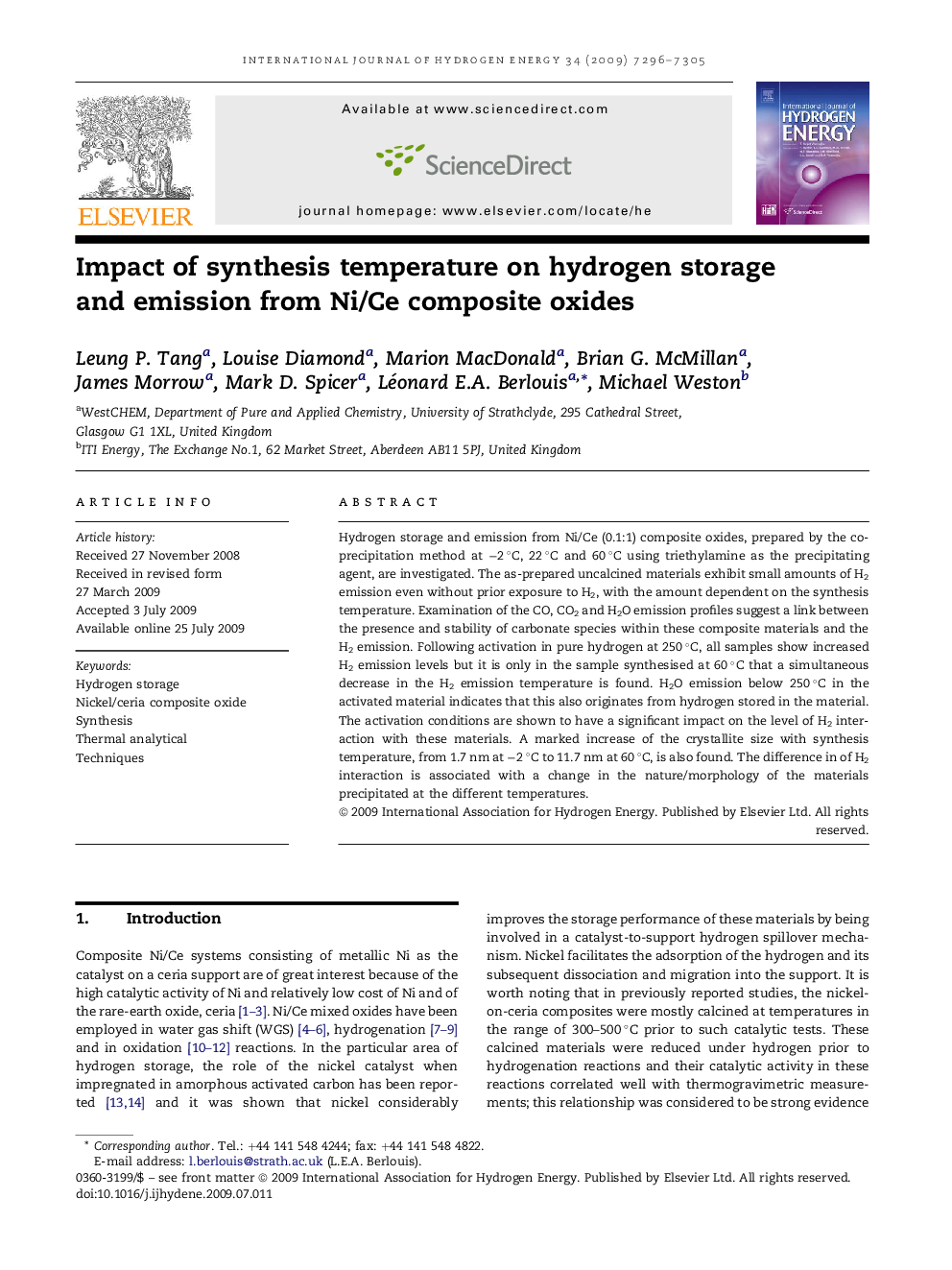| Article ID | Journal | Published Year | Pages | File Type |
|---|---|---|---|---|
| 1281117 | International Journal of Hydrogen Energy | 2009 | 10 Pages |
Hydrogen storage and emission from Ni/Ce (0.1:1) composite oxides, prepared by the co-precipitation method at −2 °C, 22 °C and 60 °C using triethylamine as the precipitating agent, are investigated. The as-prepared uncalcined materials exhibit small amounts of H2 emission even without prior exposure to H2, with the amount dependent on the synthesis temperature. Examination of the CO, CO2 and H2O emission profiles suggest a link between the presence and stability of carbonate species within these composite materials and the H2 emission. Following activation in pure hydrogen at 250 °C, all samples show increased H2 emission levels but it is only in the sample synthesised at 60 °C that a simultaneous decrease in the H2 emission temperature is found. H2O emission below 250 °C in the activated material indicates that this also originates from hydrogen stored in the material. The activation conditions are shown to have a significant impact on the level of H2 interaction with these materials. A marked increase of the crystallite size with synthesis temperature, from 1.7 nm at −2 °C to 11.7 nm at 60 °C, is also found. The difference in of H2 interaction is associated with a change in the nature/morphology of the materials precipitated at the different temperatures.
